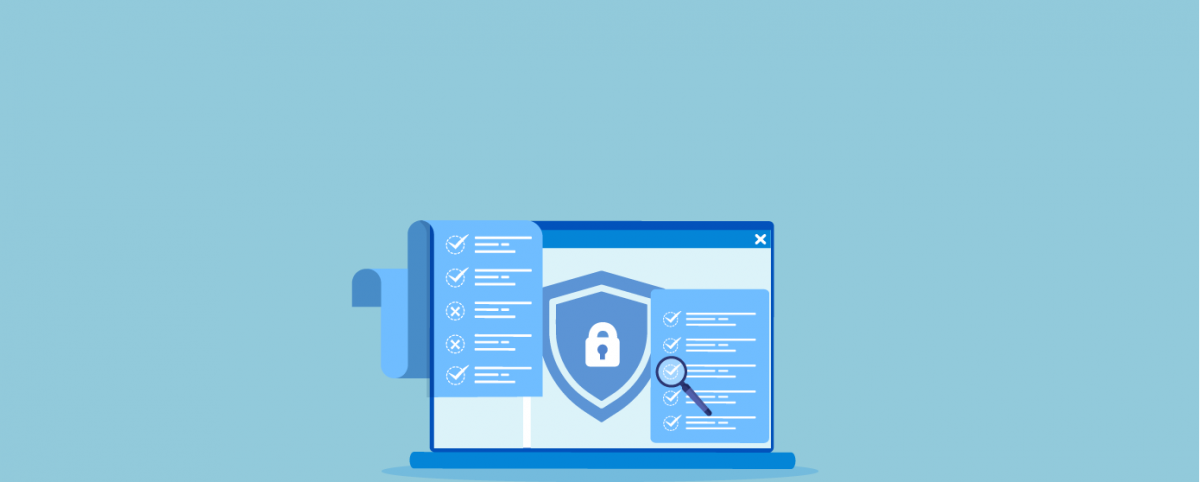How do Compliance Regulations Drive Application Security?
A zero-day flaw in MOVEit software exposed the data of 66.4 million individuals, revealing businesses are increasingly vulnerable to cyberattacks. Applications, which manage sensitive data, are prime targets for these threats.
Compliance regulations recognize the risks and establish guidelines aimed at ensuring applications meet data protection, privacy, and overall security. PCI DSS v4.0 for example introduces 64 new requirements including strict security measures to protect public-facing applications.
This blog details different compliance standards and how they drive application security through their specific requirements.
Compliance Standards with Application Security Requirements
Standard-setting bodies provide guidelines for organizations to establish and enforce information security requirements for application development, use, and acquisition. Below are key compliance regulations and their impact on application security.
1. SOC 2 (Service Organization Control Type 2)
How secure is your organization in handling customer data? SOC 2 emphasizes strong controls to protect this data. It focuses on the five Trust Service Criteria (TSC): Security, Availability, Processing Integrity, Confidentiality, and Privacy. Developed by the American Institute of CPAs (AICPA), SOC 2 is crucial for SaaS providers managing sensitive customer information.
A central SOC 2 requirement is a robust risk assessment framework. For example, Control CC3.1 emphasizes defining objectives to assess and address risks, prioritizing the most critical threats.
Risk-based vulnerability management tools like Indusface WAS play a valuable role here by quantifying and prioritizing vulnerabilities in web applications and APIs. AcuRisQ, in Indusface WAS further reduces alert fatigue, enhances security posture, and aids in audit compliance.
SOC 2’s Trust Services Criteria also specify ongoing “Monitoring Activities” under CC4.1 COSO Principle 16, which suggests the use of regular and varied evaluations. These may include monitoring controls, internal audits, compliance assessments, vulnerability scans, penetration tests, and third-party evaluations to ensure that controls are functioning as intended. This continuous monitoring process is effective only when organizations act on identified vulnerabilities.
Finally, the Availability principle (A1 Series) ensures clients have access to services when needed. SOC 2 controls aim for 100% availability, which is essential for business continuity. Protecting against DDoS attacks is key to maintaining uptime and meeting availability requirements. Investing in robust DDoS protection software can help ensure high availability.
2. ISO/IEC 27001
ISO 27001 is a global standard that outlines a framework for creating and sustaining an Information Security Management System (ISMS).
A core aspect of this standard is Annex A, which outlines various controls essential for securing information assets and managing risks. Asset management, outlined in Annex A.8, is crucial for ISO 27001 compliance. Annex A.8.1 outlines the responsibilities organizations must fulfil to protect these assets –
- Organizations must identify and secure all information assets, including external ones like domains, sub domains, IP addresses, and mobile apps. Advanced asset discovery techniques help identify shadow IT systems that may otherwise go unnoticed.
- Next, assess threats by scanning for vulnerabilities, misconfigurations, and weaknesses as new vulnerabilities appear every 20 minutes. After identifying risks and assess their potential impact.
Indusface WAS automates asset discovery, vulnerability scanning, and risk ranking. It improves risk assessments by prioritizing risks based on various factors like discoverability, complexity, ethical hacker insights, business units, and asset criticality.
In addition to asset management, ISO 27001 mandates other key controls critical for ensuring security:
A.8.26 Application Security Requirements: Ensures security is integrated into software development and deployment, protecting against vulnerabilities from the start.
A.8.29 Security Testing in Development and Acceptance: Emphasizes regular security testing throughout development and acceptance phases of new applications and systems.
A.12.6.1 Management of Technical Vulnerabilities: Requires organizations to stay informed about technical vulnerabilities, assess their exposure, and take necessary actions to mitigate risks.
Is VAPT required for ISO 27001 compliance?
VAPT is important at various stages of setting up an information security management system. Experts recommend conducting penetration testing after identifying your assets.
As threats become more advanced, organizations should regularly carry out vulnerability scans and penetration tests to stay proactive.
3. Payment Card Industry Data Security Standard (PCI DSS)
If your business handles card data, you may need to comply with over 300 security controls established by PCI DSS. This standard guides the security of web applications and systems that handle cardholder information.
Requirement 6 mandates that all web-facing applications be protected from known attacks, addressing vulnerabilities like injection flaws, buffer overflows, and insecure cryptographic storage. WAF (Web Application Firewall) is required to filter malicious traffic.
Requirement 6.4.2 in PCI DSS 4.0 updates the previous 6.6, which recommended WAFs and permitted penetration tests. By March 31, 2025, all organizations must implement a WAF for public-facing web applications to detect and block attacks.
Additionally, Requirement 6.2 emphasizes the importance of applying security patches promptly. Delays can leave systems vulnerable to attacks that exploit known weaknesses, putting sensitive cardholder data at risk. When immediate patching isn’t feasible, virtual patching offers an effective alternative by shielding applications from attacks that exploit unpatched vulnerabilities.
Requirement 6.6 further requires regular reviews of public-facing web applications and the implementation of automated vulnerability detection solutions. Effectively addressing zero-day vulnerabilities is essential for maintaining PCI DSS compliance, so organizations must stay updated on the latest security trends and developments.
Last, But Not Least, PCI 4.0 on Client-Side Protection-
As server-side security gets better, hackers are now focusing more on the client side of applications, especially third-party JavaScript services. To address the rising challenge of client-side web skimming attacks, PCI DSS v4.0 has introduced Requirements 6.4.3 and 11.6.1, which focus on strengthening JavaScript security.
Requirement 6.4.3 requires public-facing web applications are protected by enforcing authorization and integrity checks for all scripts, while maintaining an inventory with justifications for each. Requirement 11.6.1 requires tamper-detection mechanisms on payment pages to detect and address any unauthorized changes.
AppTrana’s client-side protection enables organizations to manage script authorization and ensure integrity by allowing only approved JavaScripts to execute on payment pages. Its behavioral analysis technology continuously monitors these scripts, triggering immediate alerts for any unauthorized changes. Additionally, AppTrana automatically tracks all JavaScripts and maintains a comprehensive inventory, streamlining compliance.
AppTrana WAAP further monitors HTTP headers and payment page content for unauthorized modifications. It provides real-time alerts to security teams for quick response and can conduct periodic evaluations based on risk analysis, ensuring adherence to compliance standards.
4. General Data Protection Regulation (GDPR)
Noncompliance, such as failing to protect personal data or losing control over it, can lead to significant fines. Notable penalties include British Airways’ US$230 million and Marriott’s US$124 million fines for data breaches, highlighting the serious consequences of GDPR violations.
GDPR imposes specific data security requirements on application security that organizations must address thoroughly. GDPR mandates that applications processing personal data implement security measures “by design and by default” as outlined in Article 25.
Once the application is live, GDPR Article 32 requires ongoing data protection and secure processing, ensuring no vulnerabilities compromise personal data. Article 32(d) further demands a structured approach to regularly test, assess, and evaluate the effectiveness of these security measures.
Article 32 also emphasizes a comprehensive approach to securing personal data processing to mitigate risks and protect individuals’ rights. Technical measures involve encrypting data at rest and in transit, employing pseudonymization to enhance privacy, establishing access controls, enforcing strong password policies, and implementing multi-factor authentication (MFA).
Additionally, organizations should practice data minimization by collecting only necessary personal data, conduct regular training to increase employee awareness of GDPR regulations, and develop clear data breach response plans that outline procedures for identifying, containing, and reporting breaches.
To remain effective, security measures must be continuously reviewed against evolving threats. AppTrana WAAP helps organizations adapt to the changing threat landscape and shows active risk mitigation by maintaining robust WAF rules. AppTrana is a fully managed offering for risk-based security policy tuning during the onboarding process and continuous rule tuning and updates for new vulnerabilities in code and zero-day threats.
Moreover, GDPR extends beyond just protecting data to ensuring its ongoing availability. Recital 49 highlights the importance of protecting against unauthorized access, malware, and denial of service attacks. Article 32 reinforces this by demanding not only confidentiality and integrity but also continuous availability and resilience of data processing systems.
Effective protection of personal data requires a unified solution that simultaneously addresses both DDoS and application-layer threats.
5. Health Insurance Portability and Accountability Act (HIPAA)
If you’re developing healthcare apps that manage ePHI (Electronic Protected Health Information), HIPAA compliance is essential. HIPAA is governed by two main rules: the Privacy Rule, which establishes standards for safeguarding patient information, and the Security Rule, which enforces both technical and non-technical measures to protect ePHI.
To ensure HIPAA compliance, healthcare organizations should adopt a DevSecOps approach. This integrates security into the application development process from the beginning, reducing the need for costly fixes later.
Common HIPAA violations include using unsecured methods to share PHI, employing weak third-party technologies, and improperly disposing of ePHI. Regular vulnerability scans are critical in preventing these violations by identifying potential weaknesses before attackers can exploit them.
The HIPAA Security Rule mandates a thorough risk analysis (§ 164.308(a)(1)(ii)(A)) to identify vulnerabilities and assess risks to the confidentiality, integrity, and availability of ePHI.
A risk-based approach helps prioritize vulnerabilities based on their potential impact. Apply patches whenever possible to minimize exploitation. If an immediate patching is not possible—the HHS Office for Civil Rights (OCR) advises implementing compensating controls, like restricting network access or disabling services. Additionally, virtual patching can help protect against exploitation until a formal patch is released.
Once you patch all vulnerabilities to achieve a zero open vulnerability status, you’ll be better prepared to maintain HIPAA compliance.
AppTrana WAAP’s SwyftComply feature provides a clean, vulnerability report within 72 hours, ensuring immediate patching of open vulnerabilities. This blog discusses SwyftComply in detail.
Data Loss Prevention (DLP) is also essential for HIPAA compliance, particularly in securing PHI during electronic transmission, as required by Statute 164-312 (e)(1). Organizations must continuously monitor and control data flow across their networks. AppTrana WAAP enhances this by inspecting both inbound and outbound traffic using (DPI).
This process identifies and protects sensitive data—such as Social Security Numbers and medical records—before it leaves the network. If unencrypted PHI or Personally Identifiable Information (PII) is detected, AppTrana WAAP can trigger alerts, mask the information, or block the transmission.
6. Sarbanes-Oxley Act (SOX)
The Enron scandal prompted the creation of SOX, setting new standards to prevent corporate fraud and highlighting the need for strict controls.
The Sarbanes-Oxley Act (SOX) mandates strict financial reporting for US public companies to prevent accounting fraud. Although the main goal is to validate financial statements, cybersecurity is increasingly critical in these audits.
Key sections related to security include:
Section 302: Requires companies to protect data to ensure accuracy in financial reports.
Section 404: Focuses on technical measures to safeguard financial data from tampering, mandates verification by independent auditors, and requires reporting of data breaches.
The first step in financial information security under SOX is to thoroughly understand and map your financial data. Start by evaluating your internal controls and conducting risk assessments. This involves identifying where sensitive financial information is stored, how it’s processed, and who has access to it.
In addition, SOX mandates that financial data be protected from unauthorized access, with strict access controls in place to ensure that only authorized personnel can handle sensitive information. Continuous monitoring is also essential to detect and respond to potential security breaches or compliance lapses.
Finally, SOX necessitates external validation of internal controls through independent audits to confirm compliance and verify the effectiveness of the implemented measures.
7. California Consumer Privacy Act (CCPA)
The California Consumer Privacy Act (CCPA) is a critical privacy law in California that grants consumers rights over their personal data. It mandates transparency in data collection, lets consumers opt out of data sales, and grants the right to access, delete, or correct personal information.
To meet CCPA requirements, businesses must do more than just understanding data storage and transmission—they need to actively protect it. CCPA’s “standard practices” for data security focus on mapping and cataloging customer data, ensuring encrypted storage, and rigorously testing everything—from access requests to security policies and data sharing. It also addresses risks posed by hackers exploiting weak third-party apps and insecure code.
Web and mobile apps, are a common weak spot, offering entry points for data breaches. Securing apps from threats like data scraping, while conducting regular penetration testing, helps pinpoint risks before they can be exploited.
Additionally, Data Loss Protection (DLP) solutions take things further by helping businesses identify and secure their most sensitive data. DLP detects unauthorized transfers and simplifies regulatory compliance, making it easier to protect valuable information and keep data privacy intact.
Stay tuned for more relevant and interesting security articles. Follow Indusface on Facebook, Twitter, and LinkedIn.

 September 27, 2024
September 27, 2024






